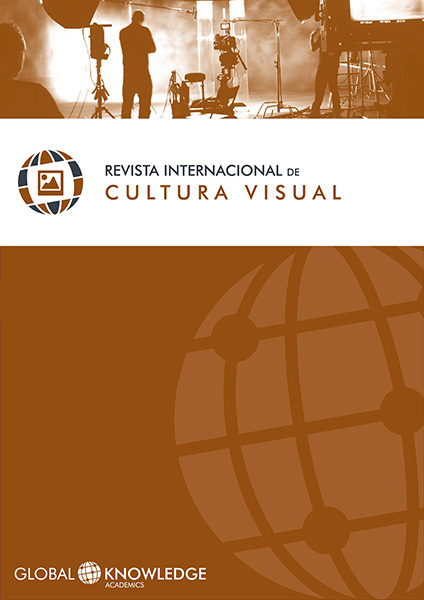To See or Not See the Shadows. The Elusive Presence of Shadows in Reality and in your Pictures
DOI:
https://doi.org/10.37467/gka-revvisual.v3.494Keywords:
Shadows, Painting, Visual Perception, RealismAbstract
The history of the iconic representations shows that the concept of realism is neither rigid nor unchanging but, on the contrary, it is multiple and changeable, perhaps because the visual reality itself presents multiple faces to observers. Shadows are elements which, though always present in front of our eyes, are rarely taken into account when defining a picture as realistic. This article weighs the importance of the shadows as optical phenomena and aims to answer the question of why a non-shadows image can come to be believed as a faithful representation of reality.
Downloads
Global Statistics ℹ️
|
510
Views
|
20073
Downloads
|
|
20583
Total
|
|
References
Alighieri, D. (2003). Divina Comedia. Madrid: Cátedra.
Baxandall, M. (1997). Las sombras y el Siglo de las Luces. Madrid: Visor.
Bressan, P. (2008). Los colores de la luna. Cómo vemos y por qué. Barcelona: Ariel.
Brücke, E. (1891). Principes scientifiques des Beaux-Arts. Essais et fragments de théorie. París: Germer Baillière et Cie.
Cabezas, L. (2002). Las máquinas de dibujar. Entre el mito de la visión objetiva y la ciencia de la representación. En J. J. Gómez Molina, Máquinas y herramientas de dibujo (pp. 83-347). Madrid: Cátedra.
Casati, R. (2001). El descubrimiento de la sombra. Madrid: Debate.
Chamisso, A. v. (1982). La maravillosa historia de Peter Schlemihl. Barcelona: Bruguera.
Chipp, H. B. (1995). Teorías del arte contemporáneo. Fuentes artísticas y opiniones críticas. Madrid: Akal.
Clark, K. (1971). El arte del paisaje. Barcelona: Seix Barral.
Eckermann, J. P. (1968). Conversaciones con Goethe. En J. W. Goethe, Obras completas (vol. II) (págs. 1.033-1.448). Madrid: Aguilar.
Ellridge, A. (2001). Gauguin y los nabis, profetas del modernismo. Madrid: Lisma.
Gómez Molina, J. J. (2008). Los “topos” del manual. En L. Cabezas, J. Bordes, & J. Gómez Molina, El manual del dibujo. Estrategias de su enseñanza en el siglo XX (pp. 17-138). Madrid: Cátedra.
Gómez, D. (2009). Sombra iluminada. Cuenca: Universidad de Castilla-La Mancha.
Guillaume, P. (1984). Psicología de la forma. Buenos Aires: Psique.
Kanizsa, G. (1998). Gramática de la visión. Percepción y pensamiento. Barcelona: Paidós.
Mach, E. (1987). Análisis de las sensaciones. Barcelona: Alta Fulla.
Milizia, F. (1992). Arte de saber ver en las Bellas Artes del Diseño. Madrid: Real Academia Española y Consejo General de la Arquitectura Técnica de España.
Ocampo, S. (1999). Cuentos completos (vol. II). Buenos Aires: Emecé.
Parreño, J. M. (1989). Cuentos de sombras. Madrid: Siruela.
Revault D'Allonnes, F. (2003). La luz en el cine. Madrid: Cátedra.
Ruskin, J. (1999). Técnicas de dibujo. Barcelona: Laertes.
Schneider, N. (2007). Vermeer. Sentimientos furtivos. Colonia: Taschen.
Tanizaki, J. (2003). Elogio de la sombra. Madrid: Siruela.
Vernon, M. D. (1973). Psicología de la percepción. Buenos Aires: Paidós.
Downloads
Published
How to Cite
Issue
Section
License
Those authors who publish in this journal accept the following terms:
-
Authors retain copyright.
-
Authors transfer to the journal the right of first publication. The journal also owns the publishing rights.
-
All published contents are governed by an Attribution-NoDerivatives 4.0 International License.
Access the informative version and legal text of the license. By virtue of this, third parties are allowed to use what is published as long as they mention the authorship of the work and the first publication in this journal. If you transform the material, you may not distribute the modified work. -
Authors may make other independent and additional contractual arrangements for non-exclusive distribution of the version of the article published in this journal (e.g., inclusion in an institutional repository or publication in a book) as long as they clearly indicate that the work was first published in this journal.
- Authors are allowed and recommended to publish their work on the Internet (for example on institutional and personal websites), following the publication of, and referencing the journal, as this could lead to constructive exchanges and a more extensive and quick circulation of published works (see The Effect of Open Access).













